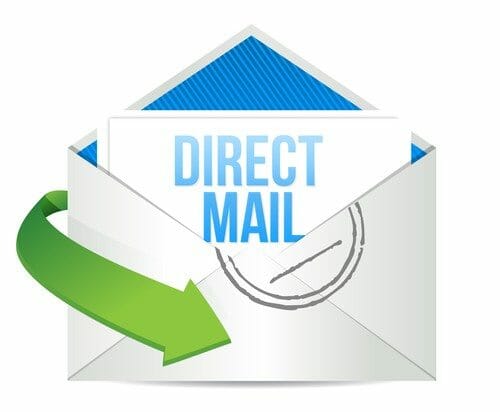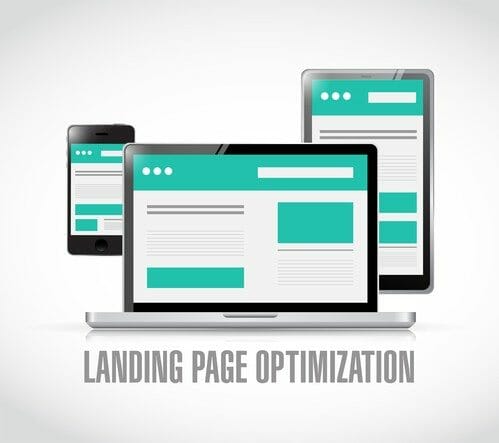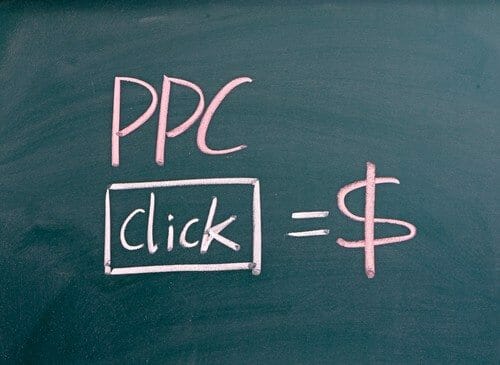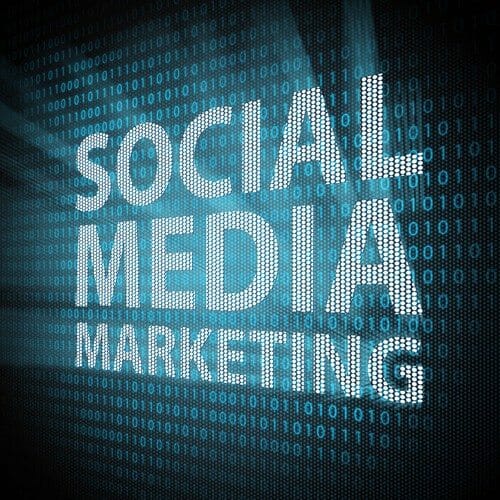What does a successful integrated marketing campaign look like?
SECTION 1: INTRODUCTION
Having a diverse and effective marketing campaign is the key to building a brand that is highly visible and successful. Knowing how to properly implement marketing, in both physical and digital forms, will help you navigate the marketing world in ways that could lead to huge boosts in your business.
Physical media and direct mail campaigns can help you connect with customers in a more intimate way, while digital marketing allows you to communicate with them in a more consistent way. If you want to reach the widest possible audience with your campaigns, combining both of these approaches is ideal. Integrated marketing communications occur on both channels.
Combining these two approaches is known in the marketing world as integrated marketing. Companies that utilize integrated marketing communications know just how successful the practice is, because their numbers show it.
In fact, here are two statistics that should intrigue you enough to get you thinking about what the benefits of integrated marketing could be for for your brand’s future:
- When companies use inbound, event-triggered, and other techniques in a single campaign (integrated marketing) they see a 600 percent higher response rate than the competition that uses solely outbound campaign techniques.
- Companies that implement integrated marketing into their campaigns see, on average, a 50 percent higher Return on Investment (ROI).

Chapter 1: What is Integrated Marketing and Why is it Important?
Before you start building a successful integrated marketing campaign, you will need to be up-to-date on what integrated marketing means in the modern advertising industry. Integrated marketing is not only about combining both physical and digital advertising methods, but also about coordinating their separate elements into a harmonious whole that will bring your business to a new level of success. Each integrated marketing platform must work well with, and compliment the other.
By creating a consistent message, delivering it to your target customer base, and spreading it over various marketing platforms, you will have the strongest kind of marketing campaign available. Avoiding fragmentation in your marketing practices should always be your top-most priority, as a strong, understandable brand identity helps increase both the visibility and revenue in regard to your brand’s products/services.
Chapter 2: Why Should Your Company Invest in Integrated Marketing?
Beyond the simple fact that integrated marketing works and is practiced by thousands of successful companies across the world, there are many specific reasons as to why your company should be investing in an integrated marketing communication plan. Here are five specific integrated marketing communication examples that are particularly important:
- New Demographics Help Keep Your Business Thriving
Some audiences are simply not reached through individual marketing approaches. For example, if you are running an email marketing campaign, you are only connecting with those who sign up for your mailing list. On the other hand, if you are running just a social media marketing campaign you risk falling on deaf ears at times. A nicely mixed marketing strategy will help you reach out to new key target markets in ways that you simply could not before. No other approach is as targeted and effectively broad as integrated marketing.
- You’re in the Process of Rebranding
Nothing is quite as complex as a rebranding campaign. These campaigns are risky and stressful as they put the visibility and recognition of your brand into the hands of the unknown. However, rebranding opens up an exciting, new potential. So, if you are rebranding you must do it right. Integrated marketing campaigns allow your business to have the confidence that practically everyone who has seen your brand before will now see its new identity. Aggressive marketing is important when taking huge chances, so integrated marketing is a must during times of rebranding.
- Customer Trust is a Top Priority
If you want your customers to trust and respect your brand, you need to convince them of your professional and courteous nature. Many customers equate brand visibility as legitimacy, so integrated marketing is the best strategy if you want to boost your brand’s visibility to new levels. Beyond this, customers want to be able to understand the way your business works and presents itself. With integrated marketing, you increase the chances that your customer base, and new customers, thoroughly understand and feel comfortable with the way your company does business.
- You Want Stronger Analytics
Some forms of marketing are, unfortunately, hard to track. If you are unable to receive valuable information on how, when, who, and why customers are interacting with your marketing, it makes it difficult to increase your marketing efforts in the future. Integrated marketing gives you the widest range of effective analytical potential of any marketing campaign approach. With a mixture of Google Analytics, Sprout Social, and other tools that allow you to track and quantify your marketing results, you will no longer have to be in the dark about the effectiveness of your campaigns. With this newly acquired information, you will be able to readjust your marketing campaigns every quarter to be even more effective than your last.
- You Want to Keep Up With a Constantly Shifting Audience
The marketing habits and preferences of customer demographics are constantly shifting. Being prepared for such shifts becomes much simpler when you are running a successful integrated marketing campaign. Senior audiences are particularly unpredictable in their marketing preferences, as many of them are currently moving to social media platforms. Therefore, having a wide range of advertising platforms covered will help your brand stay successful and visible among your entire target audience.

SECTION 2: WHAT STRATEGIES ARE AVAILABLE?
Before you can craft a knockout integrated marketing campaign, you have to understand how to put together the individual marketing pieces. Eight key strategies are available for a successful integrated marketing campaign, and we will cover each one in this section. Every one of these approaches is either an example of outbound or inbound marketing. Outbound marketing focuses on reaching out to a customer base while inbound focuses on attracting customers toward you by providing valuable content. Mixing these two types of advertising approaches together makes for a wide-reaching campaign that will allow you to target the largest customer base possible. However, perhaps it’s better to discuss the individual marketing approaches first:

Chapter 3: Direct Mail
Some target demographics still strongly prefer to receive marketing materials via physical mail, and direct mail campaigns focus on these individuals. In fact, direct mail’s use is still going strong, especially in retail advertising efforts, as it still makes up 43 percent of that market. The key to launching an effective direct mail campaign is laser targeting those most likely to respond to your offer.
Perhaps the most appealing thing about direct mail marketing is the consistently high ROI track record. In fact, the DMA Response Rate Report has consistently shown that the cost per lead of direct mail marketing is much stronger than that of PPC, email, and many more approaches. While this does not prove that direct mail is inherently better than the other methods, it does show that the highly targeted nature of direct mail is effective.
One of the reasons why direct mail tends to have such a great response rate comes down to one word: competition. When a person goes to check their mail, they are unlikely to receive multiple offers for a similar product. You will be able to dominate your audience’s awareness of your products/services by running a targeted direct mail campaign. Another thing to consider – wouldn’t you like your potential customers to physically hold your brand’s marketing message in their hands?
Direct mail is by far the best physical marketing strategy out there today, and it consistently pulls in attractive ROI rates. If you want a truly integrated marketing campaign, direct mail should be at the top of your list.

Chapter 4: Email
Getting people to join your mailing lists for email marketing campaigns is one of the most effective things you can do for your brand’s future. If you can attract people to your brand enough to have them willingly invite you to communicate with them on a frequent basis, you can be confident that people want to interact with your product. Once you have their permission to email them, it’s time to start focusing on providing an email marketing campaign that will keep them loyal and active with your company.
Email marketing has a habit of providing a great ROI. In fact, a recent study shows that the average email marketing investment sees a return of $44.25 for every $1 spent on a campaign. With those numbers to back up the effectiveness of email marketing, your business cannot afford to ignore this awesome marketing approach.
Before crafting an effective email marketing campaign, it is important that you gain a thorough understanding of email practices that will make your campaign a knockout. In general, there are five key elements you must focus on:
- Effective Subject Lines
When crafting a subject line, you need to focus on clarity and succinctness. An effective subject line will intrigue the reader without directly informing them about the full content of the email. For example, if you want to invite readers to check out your new Fall clothing sale you might use a subject line such as: “Ready to Be Stylish This Fall?”
Keeping the subject line short helps to guarantee readers are not turned away from opening your email due to confusion about the potential content. Ideally, you want to keep it around five words or less. Add any more than this and readers tend to move on. In fact, many readers will simply skim their email, so you want to make your message immediate and catchy within your subject line.
- Strong Calls to Action
Nobody in your target audience wants to have to find their way to a sales page once they are invited to take action with your brand. Keep your calls to action clear and navigate readers to the exact page you want them to visit via a link within your email. Additionally, it’s best practice to stick to one main call to action.
- Excellent Analytics
Email marketing campaigns are one of the best ways to gain valuable and accurate customer tracking information. Additionally, readjusting the approach of your email marketing campaign is easier than readjusting almost any other marketing approach. First, you should pick a high-traffic time to send out your emails, and then readjust your sending time to the period where your target demographic opens emails most consistently.
- Clearly Worded Content
Beyond simply including strong calls to action in the body of your email, you should have clearly-worded sentences that communicate your ideas in a way that will not confuse your target audience. Focus on using language that is not too industry-specific and will be easily understood by the laymen. Nobody wants to have to question what they are being sold.
- Design That Works On Every Platform
Emails make up the one marketing approach that is almost exclusively viewed more often on mobile platforms than on desktops. Because of this, you must ensure that every email chain you send out contains elements that can be viewed the same, and can be interacted with, in the same way, no matter what platform the reader is viewing it on.

Chapter 5: Landing Pages
Once you’ve successfully gained the attention of a prospective customer, you’ll want to have an excellent landing page to direct them to. By having a page set aside on either your main domain or on a separate platform that is meant for the purpose of conversion, you should see better campaign results. Companies such as Dell have seen a massive boost to their conversion rates through the use of landing pages. In fact, after putting a large emphasis on using landing pages in their campaign, they saw their conversion rate increase a full 300 percent!
Two primary types of landing pages are generally used in integrated marketing campaigns: “click through landing pages,” and “lead generation landing pages.” When using a click through landing page, you are normally getting a visitor more acquainted with the advantages of a product or service before rerouting them to a relevant page where they can make an actual purchase. Lead generation landing pages, on the other hand, are used to directly gain valuable data from visitors who show a strong interest in your brand’s products or services. Typically eBooks, coupons, free trials, and other incentives will be provided on lead generation landing pages.
When trying to create excellent landing pages, you should keep these three important tips in mind:
- Get Rid of the Main Navigation
Getting rid of links to other parts of your site helps to keep the customer from becoming distracted. While you want them to eventually interact with all areas of your business, the point of the landing page is to get them to interact with a specific deal or task. By removing outbound links, you can be more assured that they will perform the actions you desire.
- The Headline Should Match the Call to Action
If your call to action says “Come Join Our Mailing List,” but the page it directs to says, “3 Ways to Grow Your Small Business,” the customer will be confused and possibly even think they’ve clicked on the wrong link. You want your call to action to be uniform with the content it links to. That way, the customer is clear on what they are responding to.
- Keep Things On Point
For the same reasons you want to avoid extra links on your landing pages, you also want to avoid extraneous information about your company or the deal you are presenting to the customer. Keep forms short, pitches brief, and bullets to a minimum, and the customer will be much more open to reading and interacting with the information presented to them.

Chapter 6: Web Design
Sometimes you will be using your brand’s website as a campaign landing page. Other times, the customer will simply be interacting with your website thanks to successful marketing in other areas. Either way, you want your website to be strong, easy to navigate and functional across all platforms.
Increasing traffic to your website is done via other marketing approaches, but keeping the viewer intrigued and comfortable once they reach your website is just as important of a step as actually getting them there.
Keeping your websites well designed is statistically proven to both make customers view your site as more professional and for them to stick around long enough to make a meaningful interaction with your brand. In fact, a whopping 94 percent of people surveyed in one study cited web design as the main reason they would reject a website due to not trusting its contents. Additionally, 48 percent of people cited the design of a website as their number one factor in determining whether or not they saw a business as professional.
Three elements are key to creating a successful website:
- Fast Loading Speeds
Without fast loading speeds, your website will be destined to fail. Ideally, your site should load in 5 seconds or less on most web platforms. Doing so will help your SEO, and make you look better in the eyes of search engines. Additionally, the faster your website loads, the better the experience will be for your customer – and you should see higher conversion rates.
- Simplicity
Nothing turns away customers faster than a site that is difficult to navigate. When someone is trying to locate a page that will allow them to request a service or product, you want their experience to be hassle-free. Your web pages must be built in a way that requires the customer to put forth little to no effort when navigating to various parts of the website. If the process of doing so takes even one more click than is expected of such a task, you are likely to lose a valuable portion of your potential customer base.
- Functionality
You never know what platform a customer will be viewing your site on, so it is important that it runs well on all common devices. Accomplishing this is best done in the design process, so try to think of how mobile viewing will be affected when first drafting up ideas for your website’s layout. The more harmonious the site is between mobile and desktop platforms, the higher the conversion rate you should see.

Chapter 7: Personalized URLs
Making a piece of marketing more personalized is a great way to make your customer base feel appreciated and engaged. The more a customer feels involved with the business-customer relationship, the more likely they are to become loyal to your brand. One of the best ways to give them a personalized experience is through the use of personalized URLs, or PURLs.
A PURL is a personalized and unique landing page that provides a different experience for every person who responds to the calls to action in your direct mail or email marketing campaigns.
Not only does this allow the visitor to have a more personalized experience, but it allows your brand to have better analytics around direct mail campaigns. With increased response rates, real-time tracking, and deeper engagement available through developing high-quality PURLs, the practice is a strong complement to an integrated marketing campaign.
Just as you will want to remove distractions from landing pages, you will want to do the same on your PURLs. Putting an emphasis on the personalized content you are delivering to your customer is key when navigating them to a PURL. After all, the experience is not truly personal unless you are catering to their needs specifically through custom images/text and pre-populated response forms.
Chapter 8: Banner Ads
Banner ads provide a great option for highly targeted and highly measurable marketing. Additionally, the low cost of banner ads allows them to potentially shine in terms of ROI.
Even when a customer does not click directly on your banner ad, they will still be exposed to your marketing message. Visibility and relevancy is key to running any successful marketing campaign, and banner ads give you a large presence throughout targeted websites on the Internet. This makes banner ads an important slice of the integrated marketing pie.
Most advertising exposure comes from people’s peripheral experiences online. For example, banner ads will often be on the side or top of a website a person is scrolling through. This allows them to be directly seen by customers without being intrusive (like pop-up ads). Additionally, banner ads will often be placed on sites where targeted customers are likely to visit repeatedly. The non-intrusive nature of this type of advertisement typically leads to only qualified clicks.
Knowing how to properly design your banner ads is key when trying to implement a successful banner campaign into your integrated marketing approach. Ideally, you want your banner ads to use a minimal amount of content to deliver its message, and you want it to be hyper-focused toward a specific demographic. Since banner ads are mostly experienced at first via peripheral contact, you need the message to be completely clear at first glance. When people see information that is relevant to their needs, they will take notice. So, being specific about that need is a good way to gain more visibility with your banner ads.

Chapter 9: PPC
When you are targeting customers using search engines such as Google, pay per click advertising is a strong choice. Not only does the practice allow you to hyper-target potential customers, but it has the potential to generate the most quantifiable returns of any marketing practice. These highly quantifiable analytics will allow you to build and tweak future campaigns that will lead to even more revenue, visibility, and brand recognition.
In the PPC advertising model, you will only pay an advertising fee for every time an ad is clicked. As opposed to the less direct strategy of content marketing, PPC allows companies to buy visits to their website. It’s a smart investment because the keyword text ads are heavily targeted toward users who are already actively searching for the product/service via a search engine.
PPC is advantageous due to how highly targetable it is as a whole. With the flexibility to constantly measure and tweak your marketing efforts, you will find PPC to be a nice complement to your integrated marketing campaign. You can determine the exact amount of money you will spend before you even start a campaign and you get to choose exactly when and where your ads run. As a result, your ability to target your audience, and your ability to track ROI, becomes very refined.
Another component of PPC that is very important is retargeting. The basic concept is that someone visits your website and leaves, but then sees your banner ads as they browse the Internet. You pay every time someone clicks on your banner ads, but there are some platforms that charge per thousand impressions. In a typical integrated marketing strategy, you’re driving people to your website. With retargeting, you maximize every visit.

Chapter 10: Social Media
When running a high-caliber integrated marketing campaign, you must invest in social media marketing. Social media platforms have an enormous number of potential customers for you to reach out to. In fact, more than 80 percent of Americans are actively using a social media account. From Facebook to Instagram, each platform has its unique advantages, so it is important to consider which platforms are ideal for your brand’s marketing goals.
One of the best non-intrusive approaches to digital marketing, social media campaigns allow users to “like” or “follow” your brand, setting your company up for limitless advertising opportunities. What is amazing about this approach is that you will not only gain access to the people who have directly “liked” your page, but also to their extended networks in many cases.
Offering discounts or other exciting incentives when your followers “share” your content is a great way to spread your influence like wildfire throughout any social media platform. In general, you should be enticing your customer base with these sorts of offers, as it will help your posts stand apart in the sometimes peripheral world of social media feeds.
Knowing when to post is perhaps the most important aspect of running a successful social media campaign. As a result, you must educate yourself on this issue. You want to post at times where the platforms see high traffic volumes, such as lunch breaks and between 5 and 7 p.m. Additionally, the strong analytical tools many social media platforms offer make it a cinch to constantly readjust your campaign to post content at times that fit your ideal target audience.
What is perhaps the most exciting thing about social media marketing, however, is the many amazing marketing options that the platforms themselves offer. Advertising money spent on such services has exploded. In 2013, an estimated $5.1 billion was spent on social media advertising services.
Facebook, at the moment, provides the best option for this approach in terms of targeting capabilities. Sometimes it may seem like ads on sites meant for social interaction would be counter-intuitive and would fall on flat ears, but the opposite can be true. Ads on social media sites have been shown to have an 8.1x higher click rate than traditional ads when viewed on a desktop, and an even more impressive 9.1x higher click rate when viewed on mobile devices!
If you want to reach users on platforms that they are already engaged with in their day-to-day lives, social media marketing is a smart investment. With the billions of social media users out there to connect with, it would be counter-productive to ignore this strategy.

SECTION 3: HOW CAN YOUR BUSINESS SUCCEED AT INTEGRATED MARKETING?
Since you made it this far, you should now be able to see the clear advantages of each of these individual marketing approaches. But, you may still be asking yourself, “How do I combine them to my brand’s advantage?” This is an excellent question, and by learning the answer you will begin to understand how integrated marketing can boost your campaign results.
Chapter 11: Combining Approaches Effectively
The key to combining these approaches is building a harmony in the way you craft your advertisements. Think of the example we gave earlier in Chapter 5 when we insisted that every call to action must link to content that holds a similar headline. Now expand this idea to the entirety of your integrated marketing campaign.
In a nutshell, integrated marketing comes down to taking several different marketing strategies, and then combining them in a way that makes them work in a synergistic manner. By thinking of your marketing approaches as “push” and “pull,” as opposed to “traditional” and “digital,” you can begin to see even more approaches. Essentially, the push marketing of direct mail, email, and social media marketing allows you to directly deliver your message to the customer. When you are engaging in push marketing, you are cutting through the immense amount of potential competition out there and directly communicating with a prospect, encouraging them to engage in a business relationship.
On the other hand, pull marketing is the sort of natural, customer-driven, inbound marketing that content creation, PPC and similar approaches offer. Essentially, the customer finds you and “raises their hand” with interest. The idea is to combine the push and pull strategies to boost your campaign results.
For example, when you are sending out PURLs in an email marketing and direct mail campaign, you are often sending people to your landing pages. All four of these approaches are separate strategies that work together toward a common goal of generating more business or leads. Additional tactics, such as banner ads and PPC, can target the same audience that the previous efforts are targeting and use the same campaign creative to further extend the outreach and number of touch points with the customer. Furthermore, you can use retargeting to make the campaign even stronger.
As previously mentioned, in a typical integrated marketing campaign, whether the strategy is push or pull, your call to action is often to send them to a landing page. Put your retargeting code on that landing page so, when the visitor leaves, they continue to see your marketing message as they browse the Internet. Every channel can feed into the other if a campaign is set up correctly – which makes it useful to hire the same firm to handle multiple, if not all, aspects of your integrated marketing campaign.
One of the best ways to approach the first stages of this harmonious approach to marketing your brand is to write what is known as an “integrated marketing communications plan.” To create this plan, you will be bringing all of the most important aspects of a proposed claim into a single document that can be used as an all-important resource when implementing your eventual integrated marketing campaign.
This exhaustive guide will include everything marketers, designers, social media managers, and other important marketing team members will need to know before they act. Before you can make this useful guide, however, you will need to gather up all the information needed. Depending on your industry, this information may differ. However, there are a few key pieces of information that extend across all industries:
- A list of the various target markets your campaign wants to reach
- An extensive breakdown of your positioning in the market
- An Executive Summary (A summarization of the overall marketing strategy and its restrictions.)
- A list of local, international, and national competitors within your industry
- Environmental factors that must be considered in each target market
- A list of specific marketing objectives to be reached
- A breakdown of the budget available for each marketing approach
- Which marketing tools and strategies are to be used
- A background of the history, purpose, and goal of the brand’s products/services
- A SWOT (Strengths, Weaknesses, Opportunities, and Threats) Analysis of the brand
Once you have created a document that outlines all of these factors in clear terms, you will be ready to start building and implementing your integrated marketing campaign.
Chapter 12: Implementing Integrated Marketing into Your Business Model
The most important thing to consider when launching and keeping up with your integrated marketing campaign is timing. To achieve the harmonious feeling that all of your marketing is connected and has a distinct purpose, you will want content to launch alongside each other on the various marketing platforms you choose to implement in your approach. Additionally, you must be ready to start building a marketing automation plan to ensure content delivery and customer communication is handled in a professional and predictable manner. If you fail to do this, you will not only create a jumbled campaign, but it will make it difficult for you to track your results effectively.
A strong marketing automation approach is crucial to an effective integrated marketing campaign. In fact, if you want to have an impressive sense of improved marketing productivity and increased conversion rates, you simply cannot bypass this step. Many B2B marketers are currently using campaign automation technology. In a 2014 report, “B2B Marketing Automation Trends 2014”, it was shown that a whopping 53 percent of marketers are currently using this technology to help run their campaigns.
The more smoothly a marketing team can run campaigns, the more time they will have to continue to innovate and improve on their current marketing efforts – and the more customers are exposed to your advertising without directly seeking out your products or services, the more successful your campaign will become.
Chapter 13: Measuring Results
One of the key reasons your company is likely considering integrated marketing, besides the potential boost in response rate, is the massive analytical capabilities it offers. You’re running several different marketing tactics at one time and each comes with their own reporting metrics that you can learn from. You will, essentially, be exposed to multiple channels with corresponding data and be able to determine which methods are ultimately worth re-investing in during future marketing campaigns.
Some strategies included in a typical integrated marketing campaign, such as PPC and social media, allow you to adjust your approach in real-time to make your campaign even more successful. Additionally, you will be able to see which platforms are helping your customers reach your brand’s site most effectively. With this information, you will be able to readjust your campaign to invest most of your marketing budget into the effective marketing platforms, while focusing less successful ones on guiding your customers toward the successful ones. For example, if your social media marketing campaign was a roaring success, but your mailing lists underperformed, you could begin focusing on converting the customers in your mailing list to become followers on your social media platforms.
Beyond simply knowing how many customers respond to your advertising, however, you will also want to know how they are responding to your efforts. Here are a few of the various aspects of customer response you should be tracking to gain quality analytical results:
- The cost you spend per lead
- How many leads you are generating per channel
- Your conversion rates
- The frequency that people are talking about your company online.
- Track your satisfaction rates by using surveys (offering valuable incentives during these surveys can help you gain more feedback)
- The amount of unique visitors you gain every week per channel
- How long people are spending on your sites (average visit durations)
- The click through rates of your various ads
Conclusion
As an integrated marketing company we know integrated marketing can be very effective due to the fact that you are synergistically combining several different channels into one cohesive campaign. Each channel has its own strength and produces a customer touch point via different mediums (i.e. inbox, mailbox, phone, desktop, etc.). The key to success, like with any form of advertising, is testing and then learning from the data. If you need help with an upcoming campaign, check out our works to get an idea of potential strategies we use and learn why we are one of the top integrated marketing companies in the industry! Call us at 973-305-1500 or fill out this form.
I'm the Director of Digital Services and Partner at Ballantine, a family-owned and operated direct mail & digital marketing company based in New Jersey. and started in 1966 by my great uncle!



